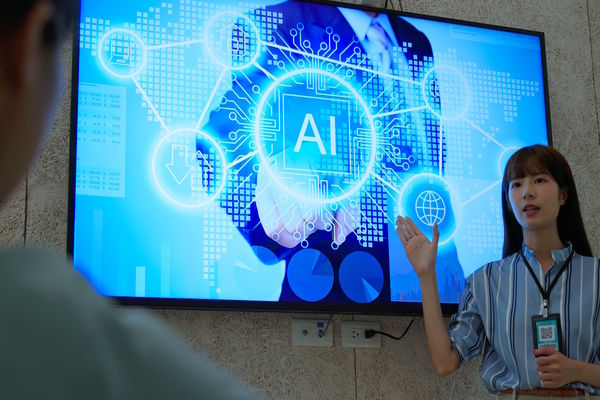Fighting employee burnout

Greg Liggett at Wrike explains how business leaders can combat the burnout epidemic and protect their most valuable asset
Over the last couple of years, employee burnout has unsurprisingly hit record highs. Whilst intense workloads, long hours, and high-pressure situations are nothing new for many industries, the pandemic certainly took things up a notch, creating a melting pot of stress.
Take the professional services sector – which has long been plagued by high levels of burnout – as just one example. According to recent studies over half (52%) of professional services employees feel more burned out in their job now than they did at the beginning of the pandemic, with many citing feeling isolated (34%) as a major contributing factor.
With hybrid work here to stay, businesses across all sectors must act now to retain their most valuable asset. After all, employees are the backbone of any business. The more you can do to prevent burnout, build confidence, and boost performance, the better your service delivery and, ultimately, your profitability will be.
Overcoming the hybrid hurdle
The hybrid landscape is creating some pretty unique challenges for businesses and their employees. For example, today there are a million ways to communicate but no consensus on how to collaborate or keep track of everyday decisions and ad hoc requests. Employees must deal with a constant bombardment of messages each day across multiple platforms.
Recent research found that, on average, employees use 14 apps and send and receive 295 messages daily. Communication is a positive - yet the increased shift from verbal to written communication across email, chat, messaging, and other tools has introduced a toxic change to the dynamic of requests.
A written request, no matter where it came from, brings with it an increased capacity to hold others accountable in a way that a passing spoken remark never could.
Yet these asks come from all directions and an employee is left to their own devices when it comes to finding, remembering, and managing this barrage of information. This chaotic system means that “What am I forgetting?” plays constantly in the back of your employees’ minds, which adds psychological pressure and leads to rising stress levels.
For business leaders around the world, this is causing increasing concern when it comes to hiring and retention. Typically, as individuals become overloaded, they need to devote more time to managing their own to-do list rather than doing the actual work, and as a result they are less engaged, less productive. It means that they are less likely to invest in a business and stay long term.
The way to combat this is to set out detailed support strategies. At the heart of this is empathy, guidance, and carefully selected technologies that enable and promote a culture of clear priorities and contributions.
Measuring how many hours individual employees “clock” each day is not the route to success. It is far better to help them to achieve their goals, giving them confidence that they are doing the most meaningful work possible. That creates a greater sense of purpose and a winning culture.
In order to achieve this, teams across different departments need to be able to collaborate and communicate effectively, with consistency and without siloes. This is where modern technologies - such as collaborative work management platforms - can help.
These solutions can help boost visibility no matter where employees log on from, enabling improved information sharing and greater transparency. Tasks are easily accessible to everyone, meaning fewer mistakes, greater consistency, and a shared knowledge of what others are working on. Ad hoc requests are consolidated in a single place.
Individuals are aware of exactly what they are contributing to a project and their role. If a certain element of that project is off-track, it quickly becomes apparent and can easily be addressed before it has a knock-on effect. It also provides a foundation for more reliable execution across time zones as remote and hybrid employees enjoy the flexibility of work-from-anywhere style work.
Getting ahead
Business leaders can also use collaborative work management technologies to actively combat burnout before it becomes a problem. For example, by increasing overall visibility and providing information on each team member’s capacity, workload, and availability, they can help organisations to get a handle on the complex world of resource management.
Managers can utilise this to evaluate scheduling scenarios before assigning work, so that tasks can be fairly balanced and no one is left feeling overwhelmed.
The best solutions on the market will go beyond providing a basic snapshot of team workload and capacity and adopt a more holistic view. Flexible planning capabilities, real-time capacity and project progress updates mean that team leaders can assess resources against actual availability on an ongoing basis.
Work can then be delegated based on both skill and capacity, ensuring that employees are not given tasks that they do not have the time or headspace to think about.
Whilst helpful, these technologies are not a silver bullet. Business leaders need to address the topics of burnout, stress, and psychological safety head on with their employees.
It’s important to get a feedback loop going early and often. As we shift gears to adapt to hybrid work environments, organisations need to listen to and accommodate the needs of their employees. Those that fail to do so risk losing the best talent on the market - even with markets cooling off there are more opportunities than ever for top performers.
Part of this is listening to how – and where – individuals want to work. After all, if workloads are balanced, employees are less likely to become stressed and there will be fewer cases of burnout. This has a direct impact not only on productivity but also on retention, with recent research discovering that stress causes about 50% of workers to look for another job and 25% to quit their current jobs altogether.
In today’s hybrid world, the employee experience is just as important as the customer experience. Business leaders need to invest in the tools that will empower employees to do their best work and deliver, without risking burnout. After all, employees are the difference between a business surviving and thriving.
Greg Liggett is Customer Chief of Staff at Wrike
Main image courtesy of iStockPhoto.com

Business Reporter Team
Most Viewed
Winston House, 3rd Floor, Units 306-309, 2-4 Dollis Park, London, N3 1HF
23-29 Hendon Lane, London, N3 1RT
020 8349 4363
© 2025, Lyonsdown Limited. Business Reporter® is a registered trademark of Lyonsdown Ltd. VAT registration number: 830519543





